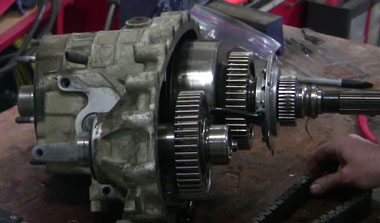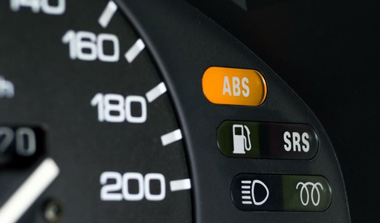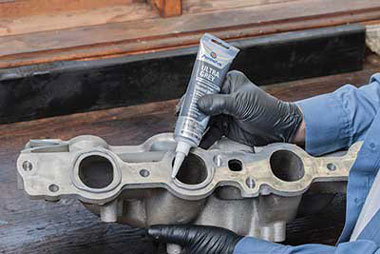If you have a bad transfer case, it’s important to get it fixed as soon as possible. But can you drive with a bad transfer case? The answer is yes, but there are some things you should know before attempting to do so.
For starters, your vehicle will likely be less stable when driving with a bad transfer case. This means that you’ll need to take extra care when cornering and braking. Additionally, your vehicle will probably make more noise than usual while driving with a bad transfer case.
If the noise is too loud or if your vehicle starts shaking, it’s best to pull over and call for help.
- A transfer case is a part of four-wheel drive and all-wheel drive vehicles
- It connects the primary driveshaft from the engine to the secondary driveshaft that goes to the wheels
- The transfer case also contains gears that engage and disengage the front axle differential, allowing the vehicle to be shifted between two-wheel drive and four-wheel drive
- If your vehicle’s transfer case is not working properly, it will not be able to shift into or out of four-wheel drive mode
- Driving with a bad transfer case can damage other parts of your vehicle, so it is important to get it fixed as soon as possible
Here are a few steps on how to drive with a bad transfer case:
1) Drive slowly:
When driving with a bad transfer case, it is important to take things slowDo not make any sudden movements or sharp turns as this can cause further damage to your vehicle
2) Avoid off-roading:
If you have a bad transfer case, avoid driving on any rough terrain or off-road conditions. This can put unnecessary strain on your vehicle and cause even more damage
3) Get it fixed ASAP:
As mentioned before, driving with a bad transfer case can damage other parts of your car
Once you notice there is something wrong with your transfer case, take it to a mechanic right away to get it fixed before any more harm is done
Can You Drive in 2Wd With a Bad Transfer Case?

A transfer case is an essential component of any four-wheel drive (4WD) vehicle. It helps to distribute power from the engine to the wheels, and allows the driver to switch between two-wheel drive (2WD) and 4WD.
If your transfer case is damaged or not working properly, it can cause problems with your 4WD system.
In some cases, you may even be unable to use your 4WD at all. And in other cases, you may be able to use your 4WD, but only in 2wd mode.
So, can you drive in 2wd with a bad transfer case?
The answer is yes, but it’s not recommended. Driving in 2wd with a damaged or malfunctioning transfer case can cause additional damage to your vehicle, and may even void your warranty. If possible, it’s always best to have your transfer case repaired or replaced before driving in 2wd mode.
Can Bad Transfer Case Cause Sounds?
Bad transfer case sounds can be caused by a number of different things. The most common cause is worn bearings or gears. Other causes can include low fluid levels, debris in the system, or a failed seal.
If you’re hearing bad transfer case sounds, the first thing you should do is check the fluid level. If it’s low, top it off and see if that solves the problem. If not, then you’ll need to investigate further.
Debris in the system is another common cause of bad transfer case sounds. This can be anything from small rocks or dirt to large pieces of metal that have broken off and are now floating around inside the case. To fix this problem, you’ll need to disassemble the transfer case and clean out all of the debris.
Finally, a failed seal can also cause bad transfer case sounds. This will usually require a complete rebuild or replacement of the unit.
Symptoms of a Bad Transfer Case
A transfer case is a vital component in a four-wheel drive vehicle. It helps to distribute power from the engine to the front and rear axles. A bad transfer case can cause a number of problems, including loss of power, strange noises, and leaks.
If you think your transfer case might be going bad, here are some signs to look for:
- Loss of Power If your four-wheel drive vehicle is suddenly losing power, it could be due to a problem with the transfer case.
When the transfer case isn’t working properly, it can’t distribute power evenly to all four wheels. This can lead to a loss of traction and decreased performance. - If you hear grinding or whining noises coming from underneath your vehicle, it could be the transfer case trying to engage but failing. This is often caused by low fluid levels or worn-out gears. Either way, it’s important to have the problem checked out as soon as possible.
- Leaks Another sign of a bad transfer case is leaks. If you see fluid leaking from underneath your vehicle, it’s likely coming from the seals or gaskets in the transfer case.
How Long Will a Bad Transfer Case Last?
Most carmakers recommend the replacement of the transfer case every 100,000 miles. However, with proper maintenance, many transfer cases can last much longer. For example, GM’s recommended replacement interval for their all-wheel drive trucks is 150,000 miles.
The main thing that will kill a transfer case is running it low on fluid. Transfer cases are filled with gear oil, which lubricates the gears and bearings inside. If the fluid level gets too low, the gears will start to grind and wear out prematurely.
Another common cause of premature failure is using the wrong type of fluid in the transfer case. Many people mistakenly use automatic transmission fluid (ATF) in their transfer cases, thinking it will be fine because it’s a similar product. However, ATF is not designed for use in gear-driven applications and can actually damage the internals of the transfer case.
If you take good care of your transfer case and make sure to use the correct type of fluid, it should last for many years without any problems.
How to Check If a Transfer Case is Good?
A transfer case is a vital component in a four-wheel drive vehicle. It helps to transfer power from the engine to the wheels and allows the driver to engage and disengage the four-wheel drive system. If your vehicle has a problem with its transfer case, it can be difficult to drive and may even become stuck in mud or snow.
There are several ways to check if your transfer case is having problems. One way is to listen for any strange noises coming from the area of the transfer case. Another way is to check for leaks coming from the seals or gaskets.
Finally, you can have your vehicle’s computer system scanned for codes that may indicate a problem with the transfer case. If you think there may be an issue with your transfer case, it’s important to have it checked out by a professional as soon as possible. Driving with a bad transfer case can damage other parts of your vehicle, and may even lead to an accident.
How Do I Know If My Transfer Case Switch is Bad?
If your transfer case switch is bad, there are a few things you can look for to be sure. First, check the fuse that goes to the switch. If it is blown, then the switch is probably bad and will need to be replaced.
You can also check for power at the switch itself. If there is no power going to the switch, then it is likely bad and will need to be replaced. Finally, you can try testing the switch with a multimeter.
If the multimeter shows that there is no continuity through the switch, then it is most likely bad and will need to be replaced.
Signs of a Bad Transfer Case Awd
If you’re driving an all-wheel drive (AWD) vehicle, it’s important to be aware of the signs of a bad transfer case. The transfer case is responsible for distributing power from the engine to the wheels, and if it isn’t working properly, your AWD vehicle may not function as intended. There are several signs that indicate a bad transfer case, including:
- A burning smell coming from under the hood
- Strange noises coming from beneath the vehicle
- A leaking fluid (usually transmission fluid or oil)
- A loss of power while driving If you notice any of these issues, it’s important to have your vehicle checked out by a qualified mechanic as soon as possible. Ignoring the problem could lead to more serious damage and expensive repairs down the road.
Transfer Case Repair Cost
A transfer case is a vital component of your vehicle’s four-wheel drive system. It transfers power from the engine to the front and rear axles. A transfer case can become damaged due to a variety of reasons, including off-roading, wear and tear, or accidental damage.
If your transfer case needs to be repaired, it is important to know how much it will cost. The repair cost will depend on the severity of the damage and the type of transfer case you have. Generally speaking, a basic repair will cost between $500 and $1000.
However, if the damage is severe, the repair could cost upwards of $3000. Transfer case repairs can be expensive, but they are necessary in order to keep your vehicle running properly. If you think your transfer case may be damaged, it is important to take it to a qualified mechanic for an inspection as soon as possible.
What Happens If a Transfer Case Goes Bad?
If your transfer case starts acting up, it’s important to take action quickly. A bad transfer case can cause all sorts of problems for your vehicle, and can even lead to complete failure of the drivetrain. Here’s a look at what can happen if your transfer case goes bad, and what you can do about it.
One of the most common symptoms of a failing transfer case is leaking fluid. If you see red or brown fluid underneath your vehicle, it’s likely that your transfer case is the source. This fluid is vital to the proper operation of the transfer case, so a leak can quickly lead to serious problems.
Another symptom of a bad transfer case is strange noises coming from the area where the transfer case is located. These noises may be grinding, whining, or clicking sounds, and they usually indicate that there’s something wrong inside the transfer case itself. If left unchecked, a failing transfer case will eventually lead to the complete failure of the drivetrain.
This means that your vehicle will be unable to move under its own power, and will need to be towed or otherwise transported to a service facility for repairs. In some cases, a failed transfer case can also damage other components in the drivetrain, so it’s important to get things checked out as soon as possible if you suspect there’s an issue. There are several things that can cause a transfer case to fail prematurely.
One common cause is simply wearing and tear; over time, all of the moving parts in the transfer case will start to wear down and break down eventually leading to failure. Another potential cause is contamination; if dirt or other debris gets into the fluids inside the transfer case this can cause damage and eventual failure. Improper maintenance is another possible culprit; if you don’t change the fluid regularly or don’t keep things clean inside the transfer case rust and corrosion can set in causing premature failure.
If you think your transfer case might be going bad, the best thing to do is take your vehicle to a qualified mechanic or service center for diagnosis and repair. Trying to fix things yourself is generally not advised, since you could end up doing more harm than good if you don’t know what you’re doing.
Can Bad Transfer Case Damage Transmission?
A transfer case is a gearbox that sits between the engine and the transmission. It is responsible for transferring power from the engine to the wheels. The transfer case also has a differential, which allows it to send power to both the front and rear wheels at different speeds.
Bad transfer cases can damage transmissions in two ways. First, if the gears in the transfer case are worn out or damaged, they can cause the transmission gears to grind or slip. This can damage both the transmission and the engine.
Second, if the differential in the transfer case is not working properly, it can cause one of the transmission shafts to spin faster than the other. This can also damage both the transmission and engine.
Can You Drive Without Transfer Case?
No, you cannot drive without a transfer case. The transfer case is responsible for transferring power from the engine to the wheels. It is located between the engine and the transmission and helps to keep the engine in its proper place.
Without a transfer case, your vehicle would not be able to move.
How Do I Know If My Transfer Case is Bad?
If your transfer case is going bad, there are a few things you might notice. For example, your car may start to make strange noises, or the gears may seem to slip when you’re driving. You might also notice that your car is having trouble shifting gears, or that it’s taking longer than usual for the transfer case to engage.
If you’re experiencing any of these symptoms, it’s important to have your transfer case checked out by a qualified mechanic as soon as possible.
Common GM Truck and SUV Transfer Case Problems
Conclusion
If your transfer case is going bad, you may be wondering if you can still drive your car. The answer is maybe. If the problem is severe, then it’s best to get the car towed to a mechanic.
However, if the problem is minor, you may be able to drive the car for a short distance. Just be sure to keep an eye on the temperature gauge and don’t push your luck.







































